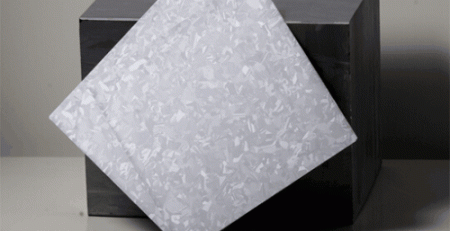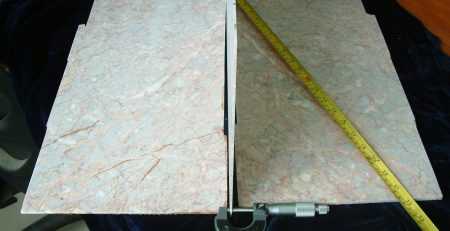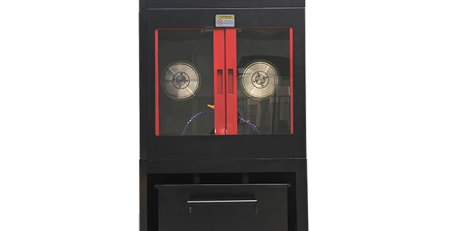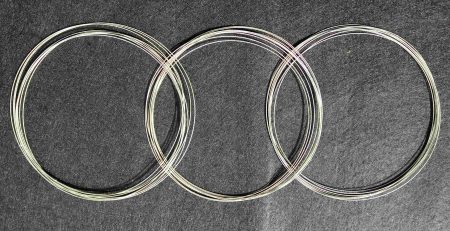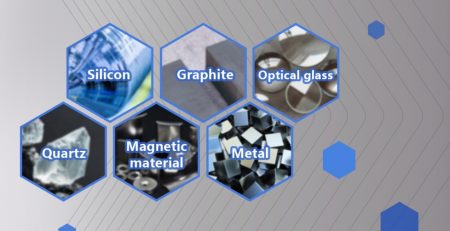Diamond Wire Cutting vs. Diamond Grinding Wheel Cutting
Introduction:
In the field of cutting technology, two prominent methods are widely used: diamond wire cutting and diamond grinding wheel cutting. Both techniques offer unique characteristics and advantages, making them essential in various industries. This blog will delve into the specifics of diamond wire cutting and diamond grinding wheel cutting, highlighting their features and comparative advantages.
1.Endless Diamond Wire Saw Cutting
Diamond wire cutting is a cutting method that utilizes a continuous loop of thin wire embedded with diamond particles to slice through various materials. This technique offers several unique characteristics and advantages that make it highly beneficial in various industries.
 1.1High cutting accuracy:
1.1High cutting accuracy:
One of the key characteristics of diamond wire cutting is its exceptional precision. The thinness of the wire allows for narrow kerf widths, resulting in minimal material loss during the cutting process. This precision enables intricate cuts and shapes, making it suitable for applications that require high accuracy and intricate detailing.
1.2Wide range of cutting applications:
It can be used to cut a wide range of materials, including concrete, stone, metal, composites, and more. This adaptability makes it a preferred choice in industries such as construction, mining, and manufacturing, where different materials need to be cut with precision.
1.3Reduce losses:
Another significant advantage of diamond wire cutting is its non-contact nature. Unlike traditional cutting methods that involve physical contact between the cutting tool and the material, diamond wire cutting minimizes the risk of damage or contamination. This is particularly important when working with delicate or sensitive materials, as it helps maintain the integrity and quality of the material being cut.
1.4High cutting efficiency:
The continuous loop of the wire allows for prolonged cutting without the need for frequent tool changes or interruptions. This leads to increased productivity and reduced downtime, making it a time-efficient cutting method. Additionally, the minimal material wastage and clean cuts contribute to cost savings by reducing material waste and minimizing the need for additional finishing processes.
2.Diamond Wire Wheel Cutting
Diamond wire wheel cutting, also known as diamond grinding wheel cutting, is a cutting method that involves using a rotating wheel embedded with diamond abrasive grains to remove material and achieve the desired cut. This technique offers distinct characteristics and advantages that make it valuable in various industries.
 Efficient Material Removal: Diamond wire wheel cutting excels in high-volume material removal. The rotating diamond abrasive grains on the wheel effectively grind and remove material, making it suitable for tasks that require significant material removal. This efficiency contributes to increased productivity and reduced cutting time.
Efficient Material Removal: Diamond wire wheel cutting excels in high-volume material removal. The rotating diamond abrasive grains on the wheel effectively grind and remove material, making it suitable for tasks that require significant material removal. This efficiency contributes to increased productivity and reduced cutting time.- Shaping and Profiling Capability: Diamond wire wheel cutting is particularly advantageous in shaping and profiling applications. The specialized wheel profiles allow for the creation of intricate shapes and contours with precision. This capability is beneficial in industries such as automotive manufacturing, where complex parts and components require accurate shaping.
- Surface Finish Control: Diamond wire wheel cutting offers excellent control over surface finish. The grinding action of the wheel can create a range of surface textures, from smooth and polished to rough and textured, depending on the application requirements. This versatility allows for diverse finishing options to meet specific design or functional needs.
- Versatility in Material Compatibility: Diamond wire wheel cutting can be used on a variety of materials, including metals, ceramics, glass, and composites. This versatility makes it suitable for a wide range of industrial applications, from precision machining to surface preparation.
- Extended Wheel Life: Diamond wire wheels have a longer lifespan compared to conventional abrasive wheels. The diamond abrasive grains embedded in the wheel exhibit excellent wear resistance, ensuring prolonged cutting performance and reducing the frequency of wheel replacements. This characteristic contributes to cost savings and improved efficiency.
- Cooling and Chip Removal: Diamond wire wheel cutting incorporates coolant or water during the cutting process, which helps dissipate heat generated during cutting and removes chips or debris from the cutting area. This cooling and chip removal mechanism enhances cutting efficiency and reduces the risk of heat-related damage to the workpiece.
Comparative Advantages of Endless Diamond Wire Saw Cutting and Diamond Wire Wheel Cutting:
When comparing diamond wire cutting and diamond wire wheel cutting, the following differences can be observed:
- Cutting Method: Diamond wire cutting involves the use of a thin wire embedded with diamond particles to make precise cuts, while diamond wire wheel cutting uses a rotating wheel embedded with diamond abrasive grains for material removal.
- Precision: Diamond wire cutting offers higher precision, allowing for intricate cuts and shapes with minimal material loss. In contrast, diamond wire wheel cutting may have slightly lower precision, potentially resulting in less accuracy in cuts and shapes.
- Material Removal Rate: Diamond wire cutting is known for its precise cuts but may not be as efficient for tasks that require significant material removal. On the other hand, diamond wire wheel cutting excels in high-volume material removal, making it suitable for tasks that require substantial material removal.
- Surface Finish Control: Diamond wire cutting provides excellent control over surface finish, resulting in smooth and clean cuts. Diamond wire wheel cutting also offers control over surface texture, allowing for a range of finishes, but it may not provide the same level of precision in surface finish control as diamond wire cutting.
- Contact vs Non-Contact Cutting: Diamond wire cutting is a non-contact cutting method, minimizing the risk of damage or contamination to delicate or sensitive materials. In contrast, diamond wire wheel cutting involves physical contact between the wheel and the material, which may carry a higher risk of damage or contamination in certain applications.
- Equipment Complexity: Diamond wire cutting requires specialized equipment and setup for the wire tensioning and guiding systems. Diamond wire wheel cutting also requires specialized equipment but is generally less complex in terms of setup.
- Application Range: Diamond wire cutting is commonly used in applications that require precise cuts, such as semiconductor manufacturing and research. Diamond wire wheel cutting is often employed in tasks that involve material removal, shaping, and profiling, such as in metalworking and stone processing industries.
It’s important to consider these differences and choose the appropriate cutting method based on specific requirements, such as the desired precision, material removal rate, surface finish, and the nature of the material being cut.
In conclusion:
Endless diamond wire saw cutting and diamond wire wheel cutting are valuable cutting techniques with their own unique features and advantages. The choice between the two depends on the specific requirements of the task at hand, including the desired precision, material removal rates, and surface finish. Understanding the characteristics and comparative advantages of these methods enables industries to make informed decisions and select the most suitable cutting technique for their applications.


